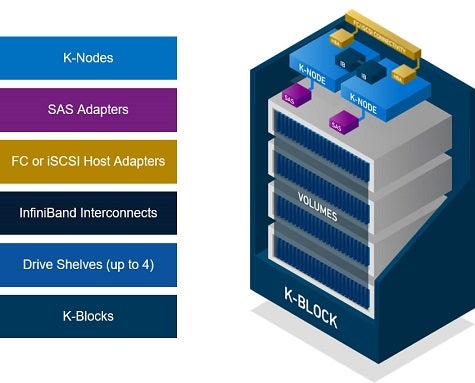The rate of storage technology innovation that now regularly occurs presents IT organizations with a challenge at a time when the I/O characteristics of applications are more likely to significantly change over time than ever.
Aiming to give IT organizations some flexibility in terms of addressing those changing requirements, Kaminario today unveiled a modular all-Flash storage platform that makes use of the latest Broadwell series of processors from Intel, 25G Ethernet connectors, and a choice of 4TB solid-state drives (SSDs) to provide five times as much storage capacity and twice the performance of its previous offerings.
Just as significantly, Shai Maskit, technology evangelist for Kaminario, says the sixth generation of the company’s K2 all-Flash array is upgradeable from 16-gigabit to 32-gigabit Fibre channel adapters, can be plugged into NVMe-based systems, and will be able to employ next-generation Intel 3D XPoint memory as these technologies become available.
“We’re future proofing the platform,” says Maskit.
In the meantime, Kaminario also revealed that it has developed a compression engine running on a dedicated card that plugs directly into a PCIe bus. Maskit says offloading the processing of compression from the core storage system will further improve capacity by 25 percent. To back that claim up, Kaminario is now increasing its pledge to guarantee data reduction levels will at least result in a 4:1 ratio improvement. Any customer that doesn’t see that level of improvement will receive free additional hardware from Kaminario to make up the difference.
Maskit says the additional storage capacity provided in the latest K2 platform is achieved by doubling the number of shelves in a platform that can be configured with either 2 or 4TB drives to provide a maximum of 4PB per array.
Thanks to the rise of NoSQL databases and elastic search technologies, Maskit notes that IT organizations need to provide access to low-latency storage in a way that can be independently scaled out. Traditional applications based on relational databases need to be able to access data alongside these other emerging applications. Those requirements are in turn driving a wave of storage technology innovations that should become more widely available in 2018, says Maskit.
The challenge, adds Maskit, is to provide a means for dealing with the storage needs of today without precluding taking advantage of any of those innovations tomorrow.



